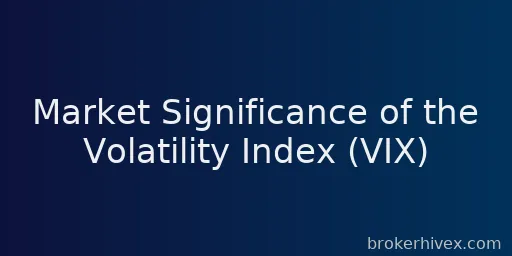Energy Derivatives Market (Crude Oil, Natural Gas) | Market Risk Management and Investment Opportunities
Summary:The energy derivatives market, particularly crude oil and natural gas futures, options, and other derivatives, is one of the world's most active financial markets, providing effective risk management and investment opportunities for energy price volatility. The energy derivatives market is not only a crucial tool for energy producers, consumers, and investors to manage price risk, but also a vital component of the global economy and financial markets. This article will delve into the structure, key products, market functions, risk management strategies, and its role in the global financial system.

1. Basic Concepts of Energy Derivatives
1. Definition of Energy Derivatives
Energy derivatives refer to financial instruments related to energy commodities (such as crude oil, natural gas, and coal). These instruments typically include futures, options, and swaps. Investors can use these instruments to hedge against future price fluctuations or speculate on market volatility. The core commodities in the energy derivatives market are oil and natural gas, which are crucial energy sources for the global economy.
Case: The role of the crude oil futures market
Crude oil futures are among the most traded commodity futures contracts globally. Through futures contracts, energy producers, refineries, airlines, and other businesses can lock in future crude oil prices, mitigating the risks associated with market price fluctuations. Investors can also speculate on crude oil futures and anticipate the impact of global economic and supply-demand fluctuations on oil prices.
II. Major Energy Derivatives and Their Applications
1. Crude Oil Futures and Options
Crude oil futures and options are the most common energy derivatives. Crude oil futures contracts allow investors to buy or sell crude oil at a predetermined price on a future date. Crude oil options give the holder the right to buy or sell crude oil at a predetermined price before the option expires.
Case: Crude Oil Producer's Futures Hedging Strategy
Crude oil producers typically hedge against falling prices by selling crude oil futures contracts. For example, let's say an oil company expects to produce 1 million barrels of crude oil over the next six months but is concerned about falling prices. To protect against this risk, the company could sell a futures contract for 1 million barrels of crude oil, guaranteeing a future sales price and thus protecting against market fluctuations.
2. Natural Gas Futures and Options
Natural gas futures are another important energy derivative. These contracts allow investors to take delivery of natural gas at a specified price on a future date. Similar to crude oil, the natural gas futures market is one of the most active commodity markets globally.
Case: Electric Utility Using Natural Gas Futures
Power companies often use natural gas futures to hedge against rising gas prices. Consider a power company that purchases natural gas to generate electricity, and natural gas prices fluctuate significantly. To lock in future gas purchase prices, the power company purchases natural gas futures contracts to ensure controllable purchasing costs.
3. Energy swap contracts
An energy swap contract is a derivative instrument that allows two parties to exchange future energy price cash flows. For example, energy producers and consumers can use energy swaps to hedge against price fluctuations. The most common energy swaps include crude oil swaps and natural gas swaps.
Case: Swap transactions between energy companies and financial institutions
Energy companies may enter into energy swaps with financial institutions, stipulating an exchange between fixed and floating prices. For example, in a swap, an energy company may pay a fixed price for cash flows and receive a floating price (depending on market oil prices), thereby ensuring financial stability.
III. Functions and Roles of the Energy Derivatives Market
1. Price Discovery
The energy derivatives market provides a price discovery mechanism for the global energy market. Through financial instruments such as futures, options, and swaps, market participants predict future energy price fluctuations based on factors such as supply and demand, international political events, and economic data, thereby forming a market reference price.
Case: Global pricing function of crude oil futures prices
Crude oil futures markets, particularly those on the New York Mercantile Exchange (NYMEX) and the Intercontinental Exchange (ICE) in London, play a central role in global crude oil pricing. These futures markets enable investors, producers, and consumers to predict and manage future energy prices, thereby setting the standard for global oil markets.
2. Risk Management
The energy derivatives market provides effective risk management tools for energy producers, consumers, and companies across various industries. By hedging against price fluctuations in energy sources like crude oil and natural gas, companies can lock in future purchase or sales prices, mitigating the impact of price uncertainty on profitability.
Case: Airlines use fuel futures to hedge against oil price fluctuations
Airlines are directly affected by energy price fluctuations, especially rising fuel prices, which can significantly increase operating costs. To mitigate the risks of oil price fluctuations, airlines purchase fuel futures contracts to lock in future fuel purchase prices, thereby ensuring financial stability.
3. Speculation and Arbitrage
The energy derivatives market also provides lucrative trading opportunities for speculators and arbitrageurs. Speculators can buy and sell by anticipating price fluctuations in the energy market, while arbitrageurs can profit from trading by exploiting price differences between different markets.
Case: Calendar Arbitrage in the Energy Market
In the crude oil futures market, investors may find price discrepancies between futures contracts with different expiration dates. Arbitrageurs exploit this price discrepancy by selling short the nearby contract and simultaneously buying the later-dated contract, thereby generating risk-free profits.
IV. Risks and Challenges in the Energy Derivatives Market
1. Market volatility and high leverage risks
Energy markets, particularly crude oil and natural gas markets, are often highly volatile. Energy prices can fluctuate dramatically due to factors such as supply and demand, geopolitical events, and natural disasters. Investors may be exposed to increased risk when trading with leverage.
Case: The 2020 crude oil price crash
In 2020, due to the global economic slowdown caused by the COVID-19 pandemic and the oil price war between Saudi Arabia and Russia, crude oil prices plummeted, even briefly turning negative. Such extreme volatility caused many investors holding long positions to suffer significant losses.
2. Liquidity risk and market closures
Despite high trading volume, the energy derivatives market can suffer from insufficient liquidity in certain extreme circumstances, making it difficult for investors to close or adjust positions in a timely manner. This illiquidity is particularly pronounced during periods of significant market volatility, potentially leading to trade execution failures and increased transaction costs.
Case: Market liquidity issues during the financial crisis
During the 2008 global financial crisis, liquidity issues emerged in the energy derivatives market, leading many financial institutions to suffer significant losses due to leverage and illiquidity. Extreme market volatility caused energy derivatives prices to deviate from fundamentals, and liquidity issues exacerbated market risks.
3. Policy and regulatory risks
Price fluctuations in the energy derivatives market are driven not only by supply and demand, but also by factors such as government policies, international trade policies, and environmental regulations. Regulatory uncertainty can have a significant impact on the market, especially amidst the global energy transition and growing tensions over climate policy.
Case: EU Emissions Trading Market
Policy changes in the EU's carbon emissions trading market have had a significant impact on the energy derivatives market. As the EU strengthens its climate change policies, the carbon emissions costs faced by energy companies are gradually increasing, affecting pricing and trading strategies in the energy derivatives market.
V. Conclusion
The energy derivatives market plays an indispensable role in the global financial system, particularly in managing price risks associated with energy sources such as crude oil and natural gas. Through derivatives such as futures, options, and swaps, energy companies and investors can effectively hedge against market volatility, provide price discovery, and safeguard the global energy supply chain. However, the energy derivatives market is also associated with high volatility, liquidity risk, and policy uncertainty, requiring investors to carefully assess the risks involved. With the transformation of the global energy landscape and innovation in financial markets, the energy derivatives market will continue to provide critical support for the stability and development of the global energy market.
🔗Reference Links
⚠️Risk Warning and Disclaimer
BrokerHivex is a financial media platform that displays information sourced from the public internet or uploaded by users. BrokerHivex does not endorse any trading platform or instrument. We are not responsible for any trading disputes or losses arising from the use of this information. Please note that the information displayed on the platform may be delayed, and users should independently verify its accuracy.

